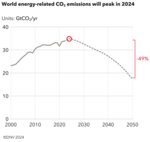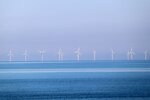BP Energy Outlook 2019: Dual Challenge for the World – Provide More Energy with Fewer Emissions
The greatest uncertainties over this period involve the need for more energy to support continued global economic growth and rising prosperity, together with the need for a more rapid transition to a lower-carbon future. These scenarios highlight the dual challenge that the world is facing. The Outlook also considers a number of other issues including the possible impact of an escalation in trade disputes and the implications of a significant tightening in the regulation of plastics.
Much of the narrative in the Outlook is based on its evolving transition scenario. This scenario and the others considered in the Outlook are not predictions of what is likely to happen; instead, they explore the possible implications of different judgements and assumptions.
In the ‘Evolving Transition’ scenario, which assumes that government policies, technologies and societal preferences evolve in a manner and speed similar to the recent past:
- Global energy demand increases by around a third by 2040, driven by improvements in living standards, particularly in India, China and across Asia.
- Energy consumed by industry and buildings accounts for around 75% of this increase in overall energy demand, while growth in energy demand from transport slows sharply relative to the past as gains in vehicle efficiency accelerate.
- The power sector uses around 75% of the increase in primary energy.
- 85% of the growth in energy supply is generated through renewable energy and natural gas, with renewables becoming the largest source of global power generation by 2040.
- The pace at which renewable energy penetrates the global energy system is faster than for any fuel in history.
- Demand for oil grows in the first half of the Outlook period before gradually plateauing, while global coal consumption remains broadly flat. Across all the scenarios considered in the Outlook, significant levels of continued investment in new oil will be required to meet oil demand in 2040.
- Global carbon emissions continue to rise, signalling the need for a comprehensive set of policy measures to achieve a substantial reduction in carbon emissions.
“The Outlook again brings into sharp focus just how fast the world’s energy systems are changing, and how the dual challenge of more energy with fewer emissions is framing the future. Meeting this challenge will undoubtedly require many forms of energy to play a role,” said Bob Dudley, group chief executive.
“Predicting how this energy transition will evolve is a vast, complex challenge. In BP, we know the outcome that’s needed, but we don’t know the exact path the transition will take. Our strategy offers us the flexibility and agility we need to meet this uncertainty head on.”
“The world of energy is changing,” agrees Spencer Dale,group chief economist. “Renewables and natural gas together account for the great majority of the growth in primary energy. In our evolving transition scenario, 85% of new energy is lower carbon.”
- Source:
- BP
- Author:
- Press Office
- Keywords:
- BP, energy outlook, outlook, energy, wind energy, renewable energy, wind, energy transition, emissions

























